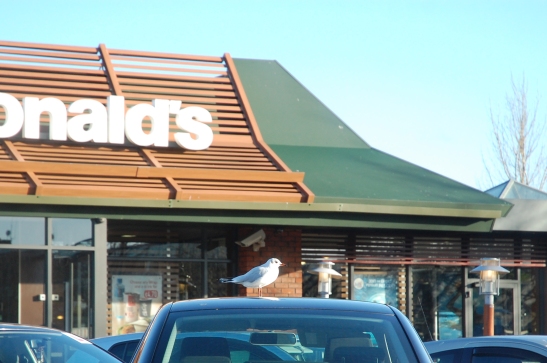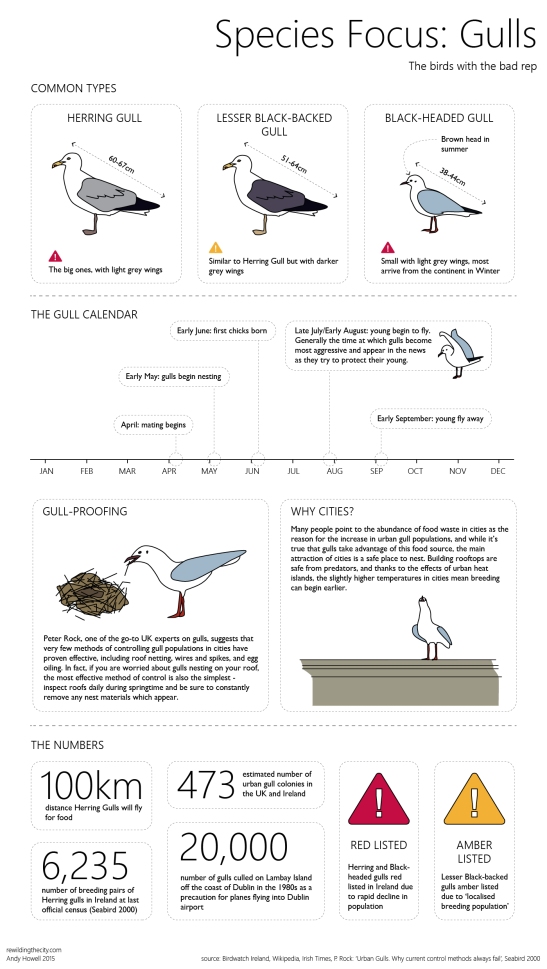Species Focus: Gulls
Another summer, and with it comes the latest stories of aggressive gulls attacking pets, children and the elderly. In January of this year this blog discussed the urban food chain and how the loss of Ireland’s top-level predators has allowed the growth in numbers of animals below these, including gulls. As gulls tend to return to the news in the summer months, this post takes a closer look at the species and puts the record straight for the bird with the bad rep.
Naming
Technically there’s no such thing as a “seagull.” Rather, there are several species of “gull” and though many favour the sea, they are not exclusively found there. Among the species most commonly found in Dublin are herring gulls, lesser black-backed gulls, and black-headed gulls, with herring gulls being responsible for most of the negative press in Ireland (they’re the big ones).
Population
The last official bird census for the UK and Ireland (Seabird 2000) put the number of breeding pairs of herring gulls in Ireland at 6235, representing a significant drop over the previous decades. This falling population of gulls led to both herring and black-headed gulls being red-listed by BirdWatch Ireland, with lesser black-backed gulls being amber-listed. While early figures from the next census show a rise in the number of urban gull colonies across Ireland and the UK (from 239 in 2000 to 473 now), the final results will give a better idea of how sustainable the gull population is.
The City as a Habitat
The public perception is that gulls are moving to cities in response to the abundance of food waste available for them to scavenge. While gulls are indeed opportunistic in this sense, the real draw of cities is the safety of rooftop nesting spots. As Peter Rock, the foremost expert on urban gulls in the UK, explains:
Town has no predators and little disturbance. Additionally, ambient temperatures in town are 4-6 °C higher than the surrounding countryside (Heat Islands) allowing urban gulls to breed slightly earlier than those in traditional, wild colonies
Pest Control
In the report referenced above, Rock methodically lists current gull control methods and why they are ineffective, including netting, egg oiling and placing wires and spikes on buildings. In fact, one of the most effective methods of control is also the simplest – inspect roofs daily during springtime and be sure to constantly remove any nest materials which appear.
And before anyone suggests vigilante-style gull hunting as a solution, don’t waste your time, as Rock calmly explains:
The shooting of gulls in town would require many guns and much time.
The graphic that follows offers a summary of the facts about gulls in Ireland, including brief descriptions of the three most common species, and a rundown of the gull calendar.


